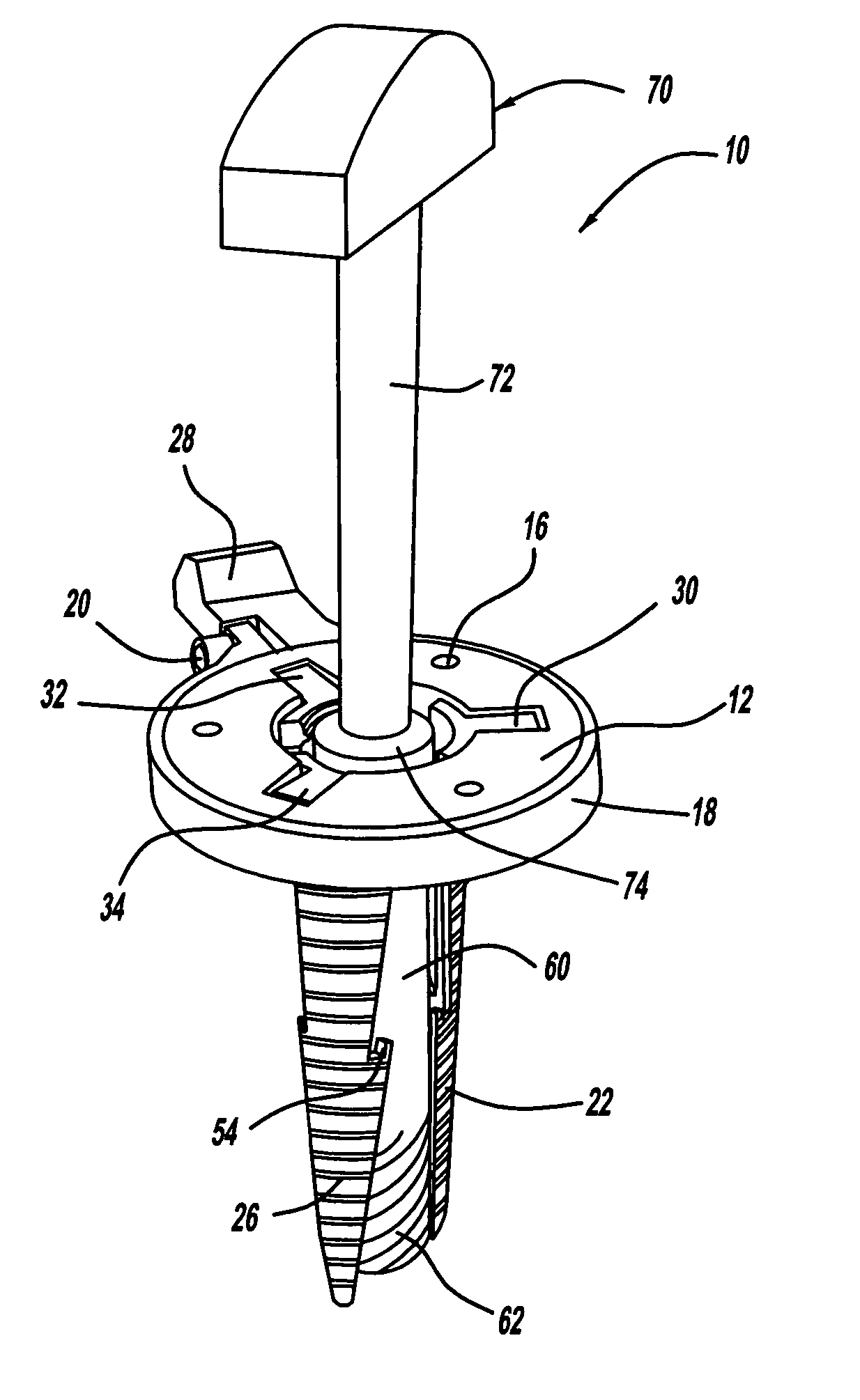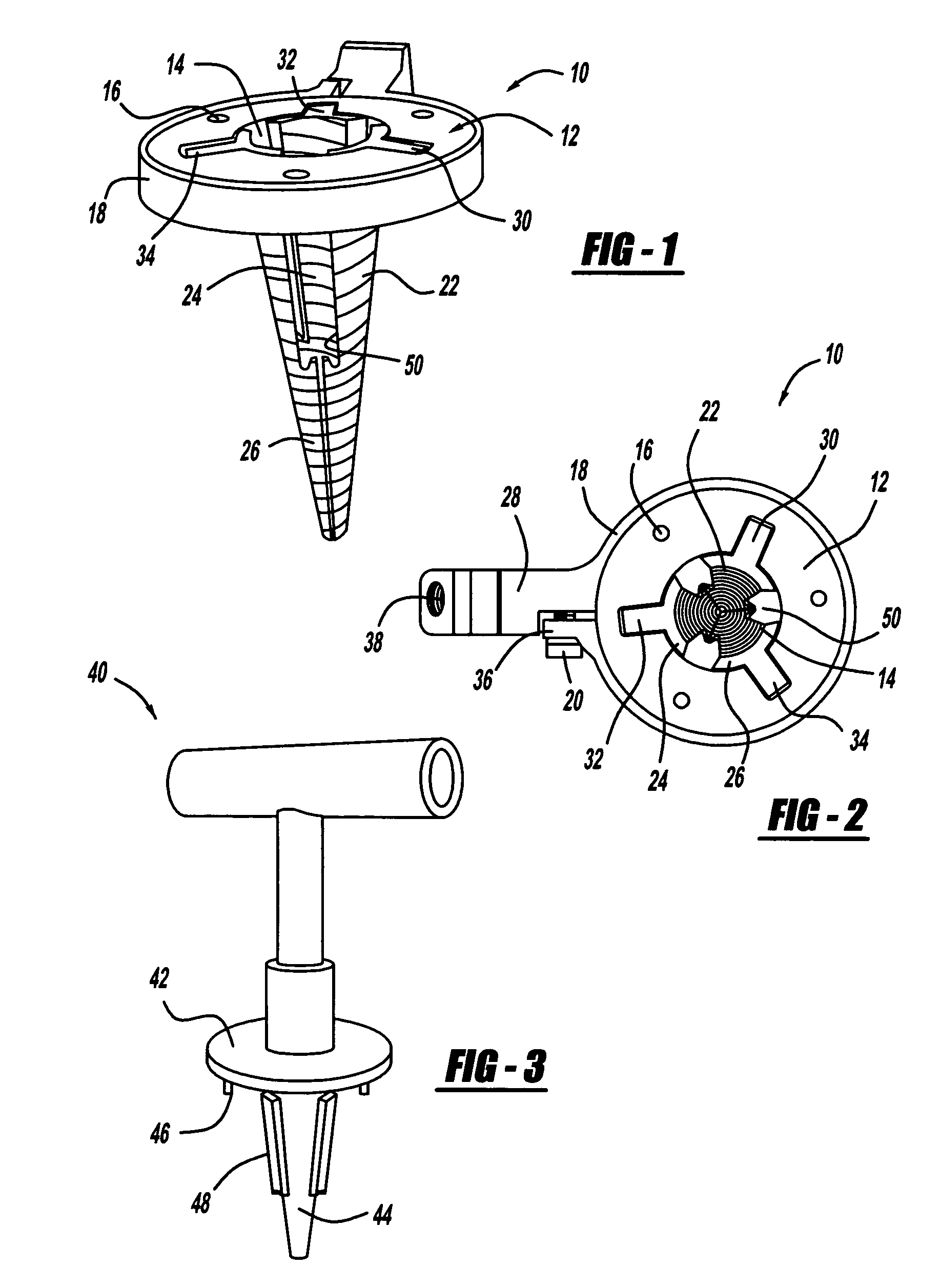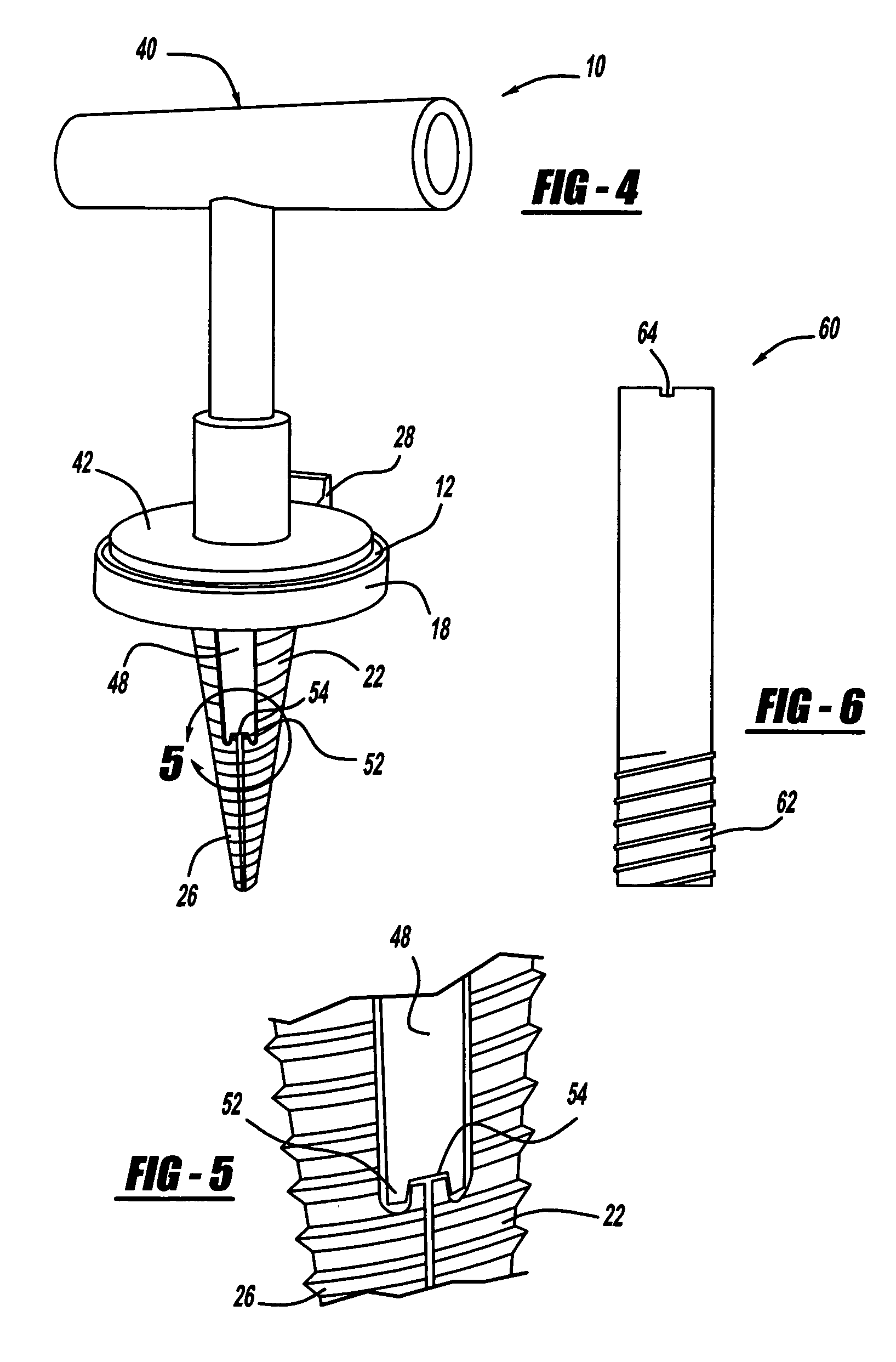Minimally invasive surgical access device
a minimally invasive, access device technology, applied in the field of minimally invasive access devices, can solve the problems of affecting the long term health of the spine, affecting the function and strength of the spine, and longer hospital stays and recovery, so as to reduce the risk of damaging anatomical structures
- Summary
- Abstract
- Description
- Claims
- Application Information
AI Technical Summary
Benefits of technology
Problems solved by technology
Method used
Image
Examples
Embodiment Construction
[0021]The following discussion of the embodiments of the invention directed to a minimally invasive surgical access device is merely exemplary in nature, and is in no way intended to limit the invention or its applications or uses. For example, the access device of the invention has particular application for minimally invasive spinal surgical procedures. However, as will be appreciated by those skilled in the art, the access device of the invention will have application for other types of minimally invasive surgeries.
[0022]FIGS. 1-10 show various views of various components of a minimally invasive surgical access device assembly 10, according to an embodiment of the present invention. The various components of the assembly 10 can be fabricated and assembled by any suitable technique, such as molding, stamping, welding, etc., and can be made of any suitable material, such as aluminum, steel, radio-lucent carbon / graphite composites, etc.
[0023]As shown in FIGS. 1 and 2, the access dev...
PUM
 Login to View More
Login to View More Abstract
Description
Claims
Application Information
 Login to View More
Login to View More - R&D
- Intellectual Property
- Life Sciences
- Materials
- Tech Scout
- Unparalleled Data Quality
- Higher Quality Content
- 60% Fewer Hallucinations
Browse by: Latest US Patents, China's latest patents, Technical Efficacy Thesaurus, Application Domain, Technology Topic, Popular Technical Reports.
© 2025 PatSnap. All rights reserved.Legal|Privacy policy|Modern Slavery Act Transparency Statement|Sitemap|About US| Contact US: help@patsnap.com



